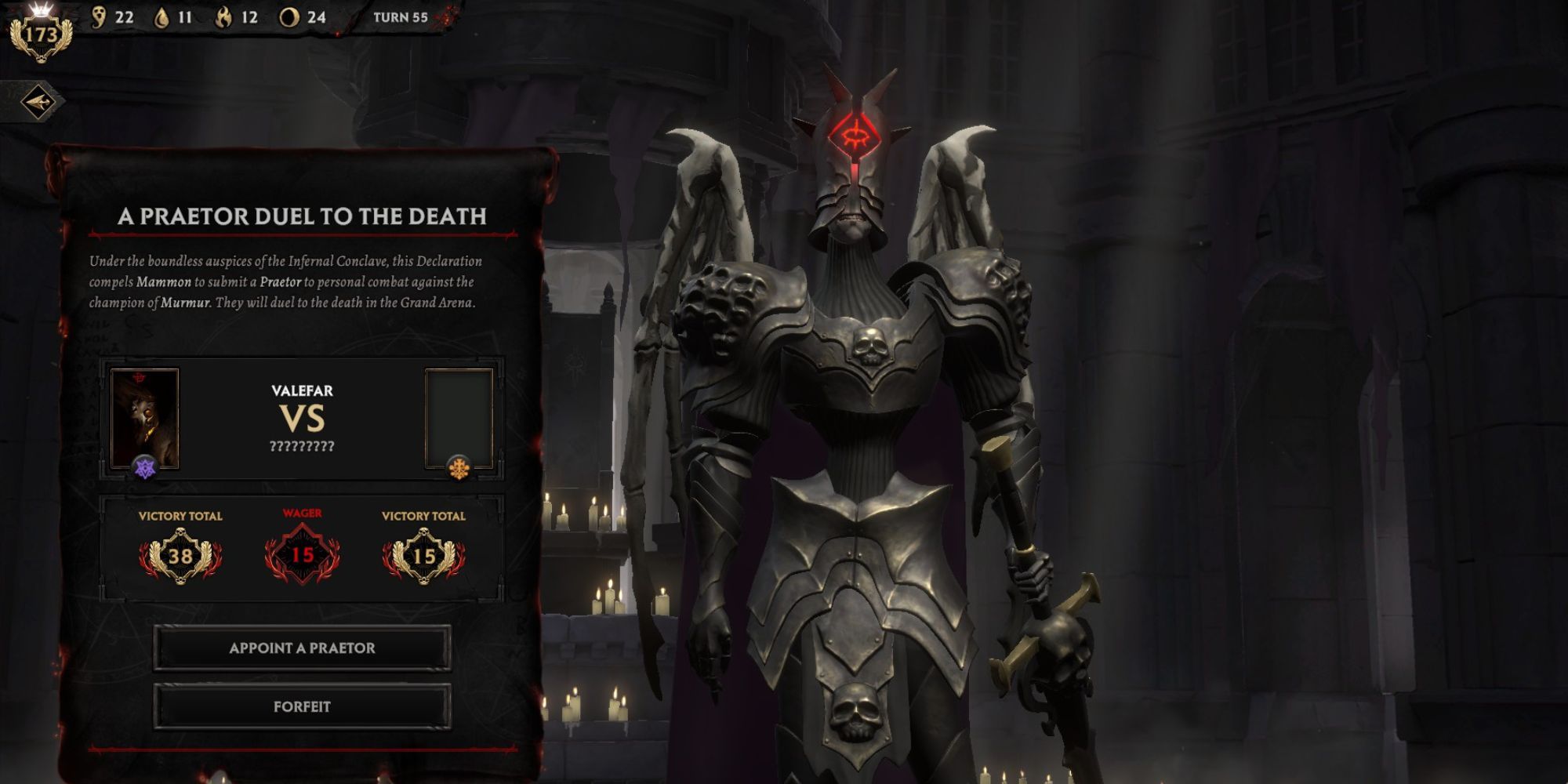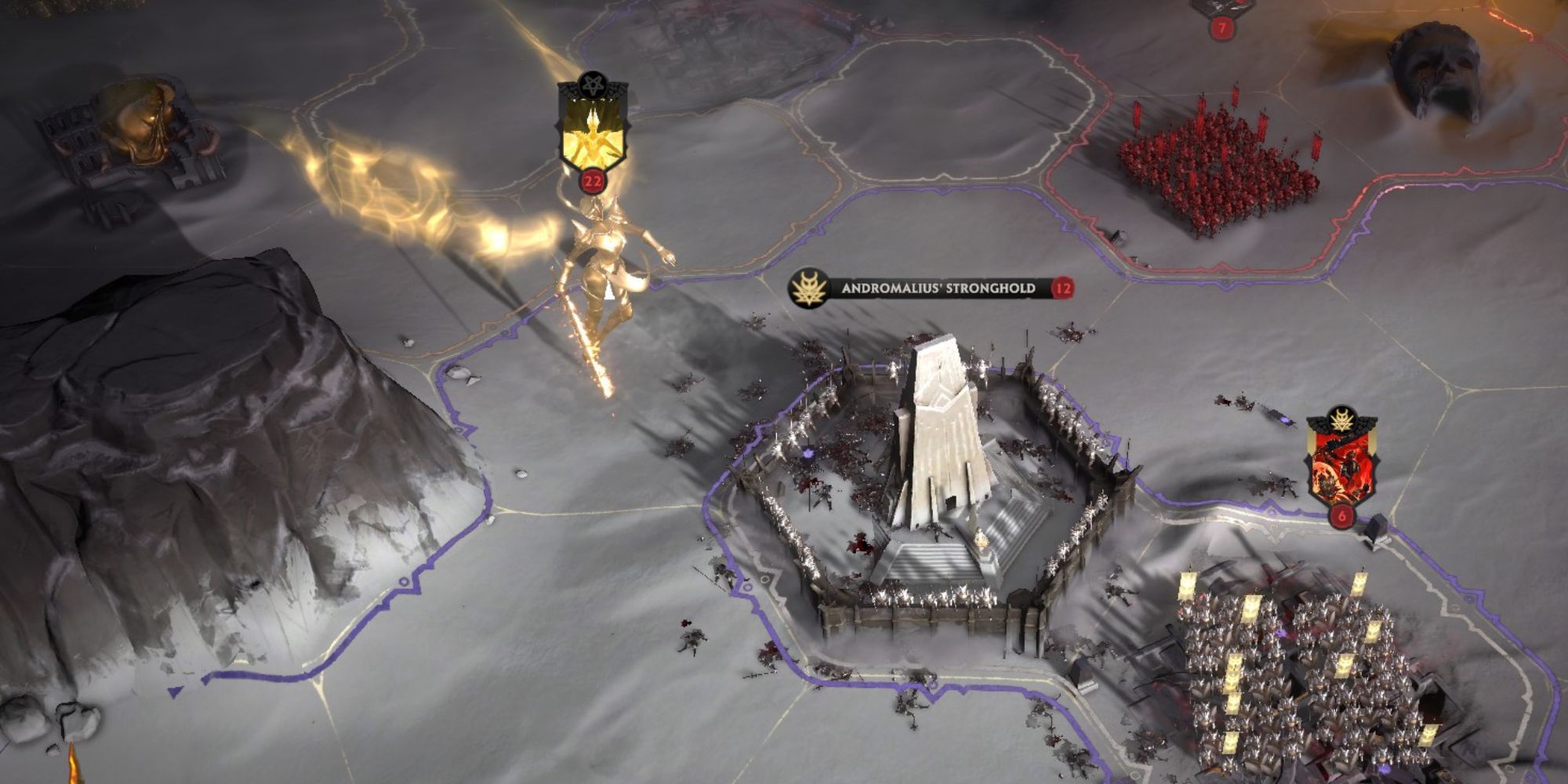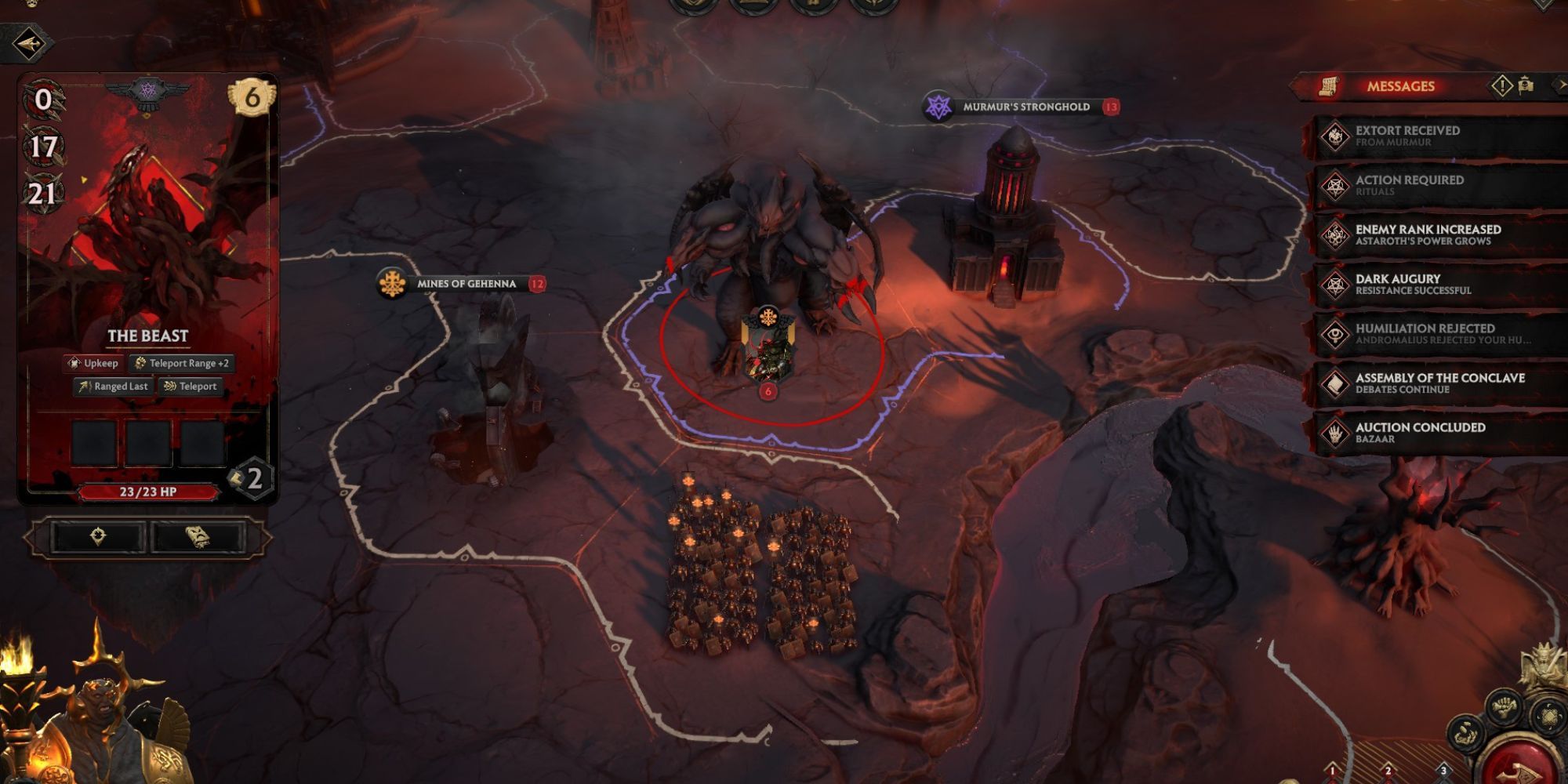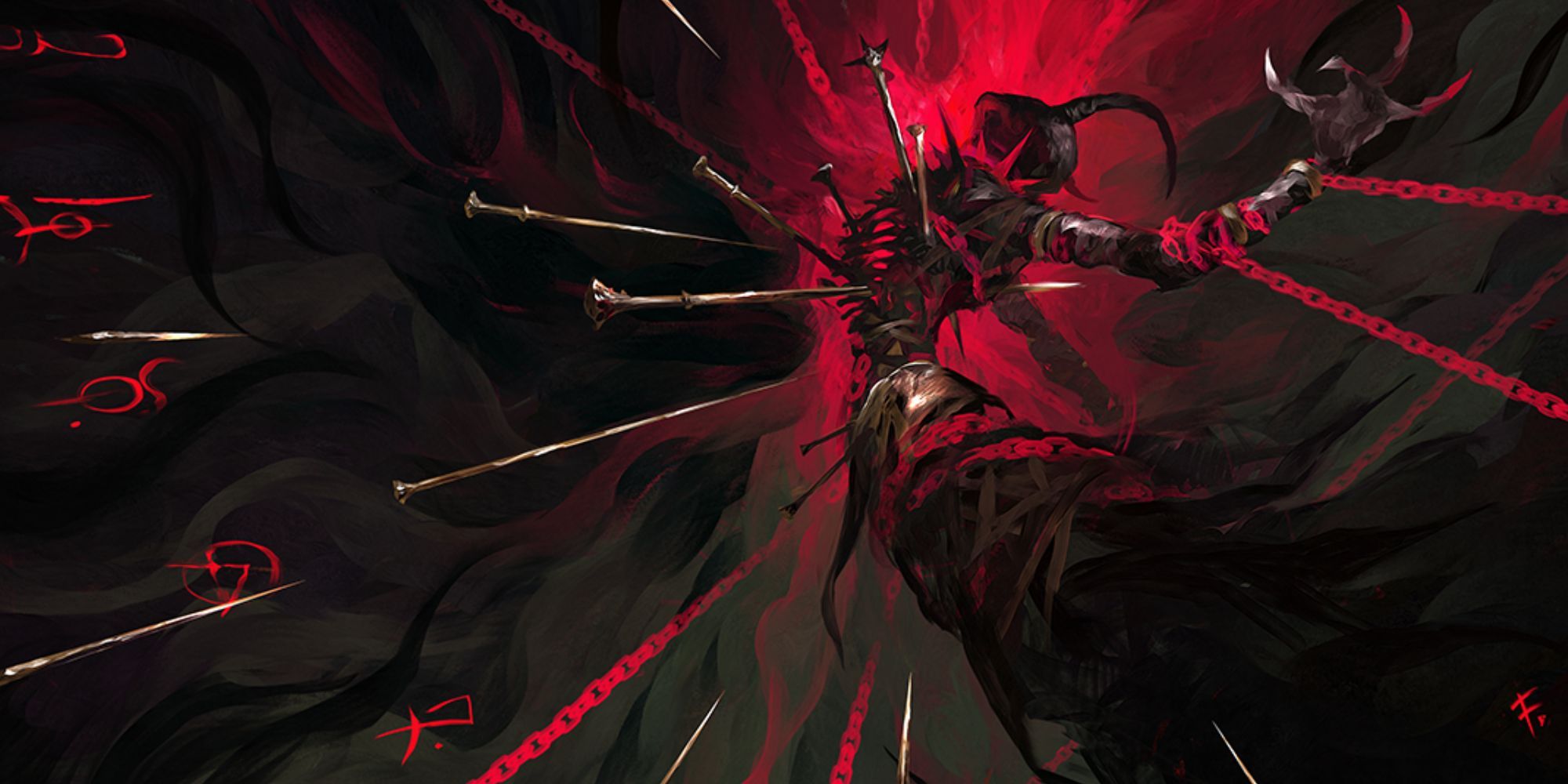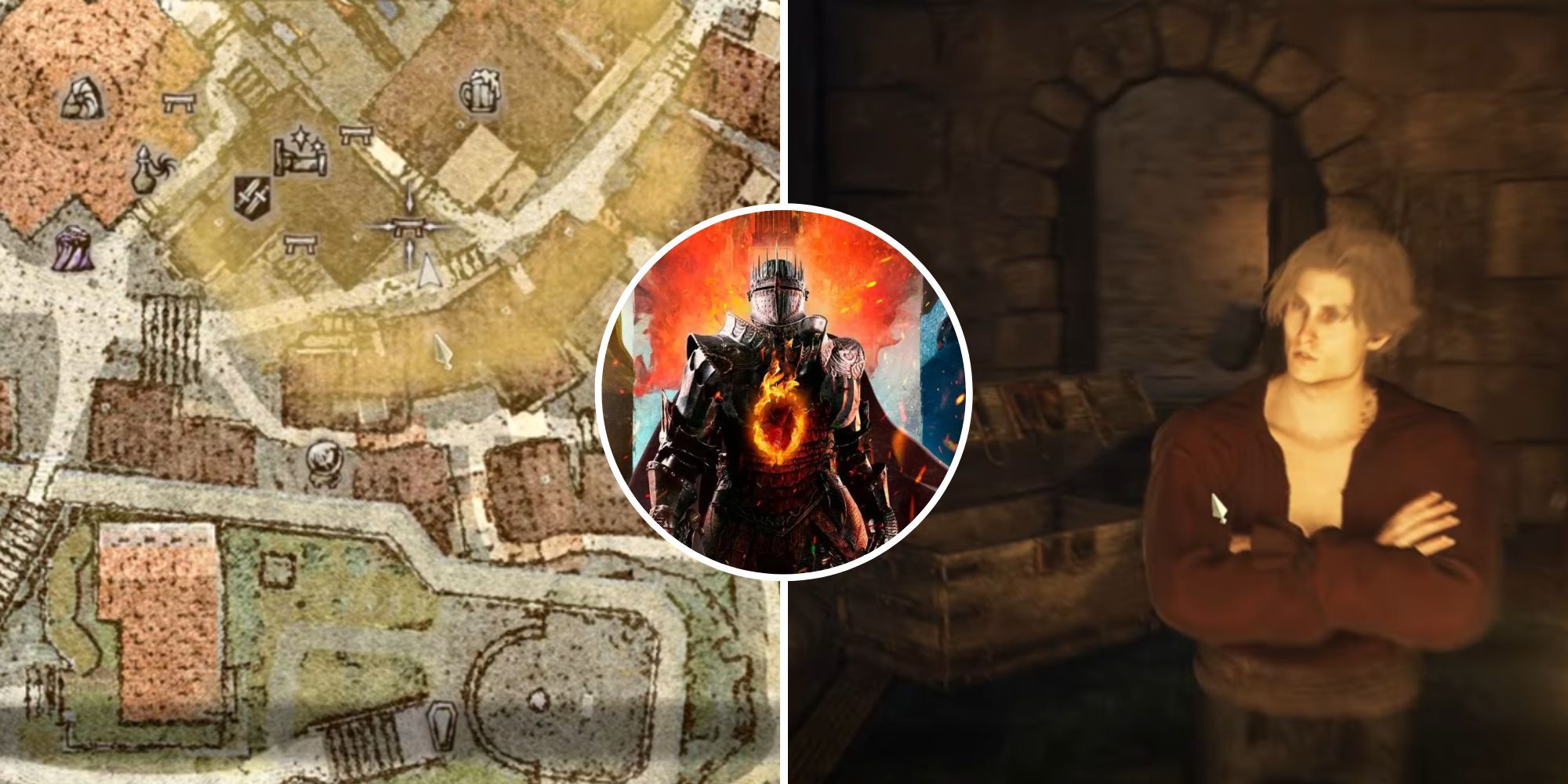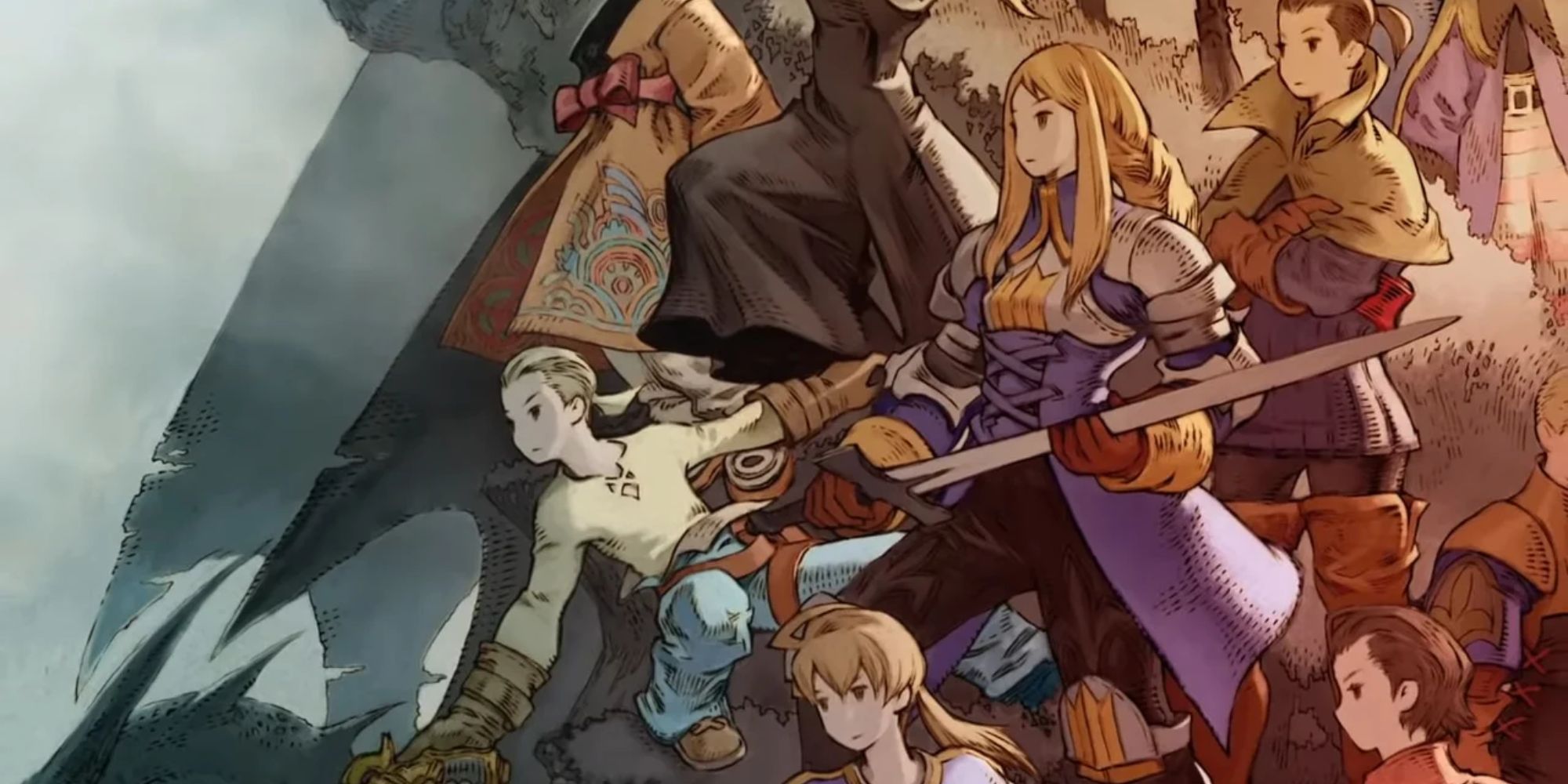Solium Infernum
Solium Infernum is a truly satisfying political strategy game with a ton of unique systems to allow you to scheme and backstab to your heart’s content. Reviewed on PC.
- Released
- February 22, 2024
- Diplomacy systems have a ton of potential
- Stunning art style and visual design
- Unique strategy gameplay
- Excellent soundtrack
- Asynchronous multiplayer
- Strategic depth
- Tribute consolidation system is laborious
- Steep learning curve
Solium Infernum is a crackpot idea when you think about it. After the resounding success of Armello, Australian studio League of Geeks was on the hunt for a new project. The team’s thoughts kept creeping back to an obscure 2009 strategy game with a cult following, the original Solium Infernum by Vic Davis. One conversation led to another and suddenly a full-blown re-imagining of the original was in development.
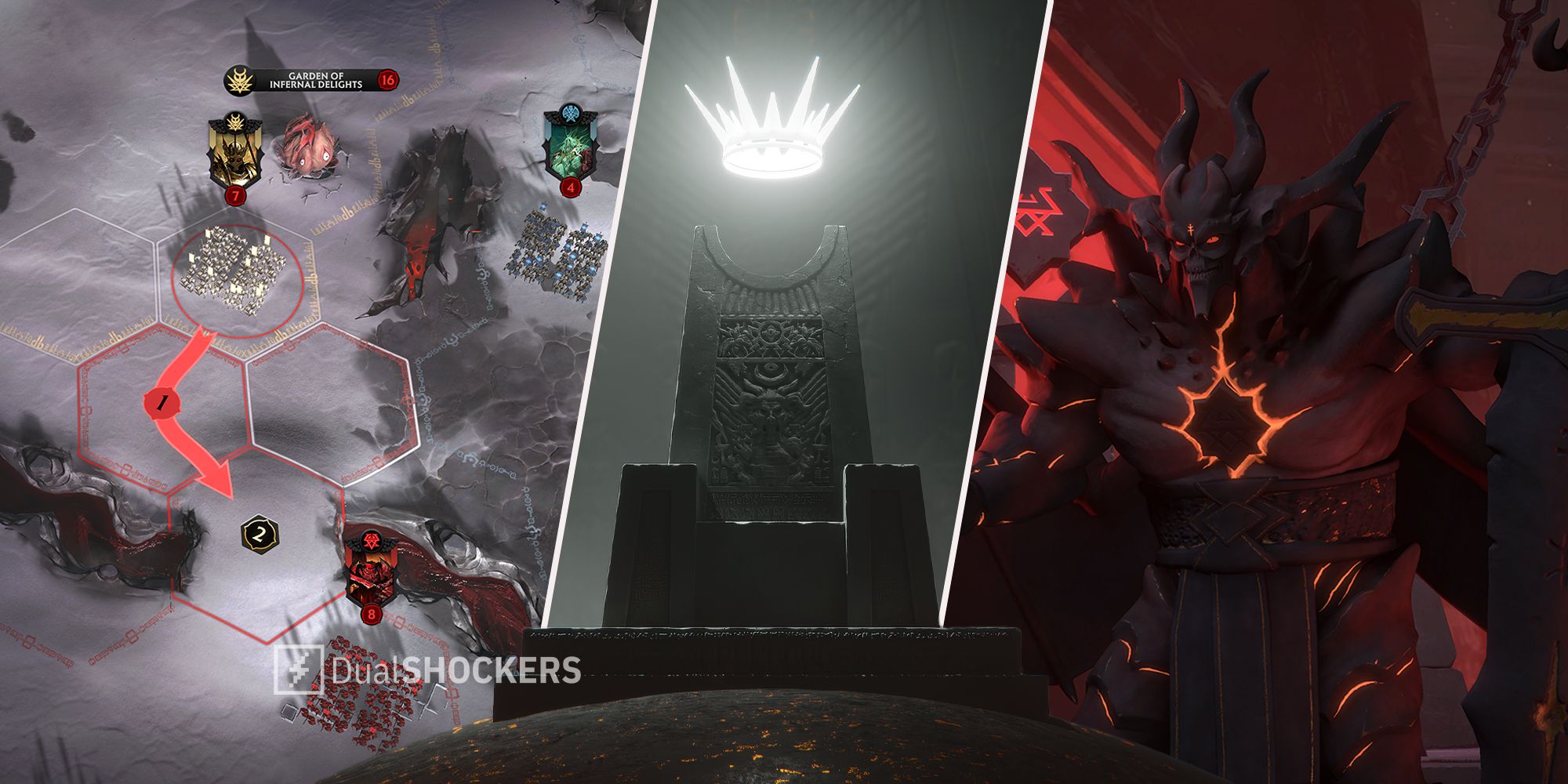
Solium Infernum Is About Taking Over Hell Through Politics And Cunning
We sat down with Trent Kusters, co-founder of League of Geeks for a hands-off preview of Solium Infernum.
It was extremely important to League of Geeks that Solium Infernum was not just another strategy game where you could build a large army to roll over your opponents. The beauty of the original was in the Machiavellian schemes you could hatch, and the long-term political machinations you could pursue. Solium Infernum has all of this, and more.
Paradise Lost
Solium Infernum draws inspiration from John Milton’s interpretation of Hell from Paradise Lost, an ashy-grey landscape constantly being contested by Archfiends, the worst beings in all of mythology. We’re talking about the abomination Beezlebub, the fallen angel Andromalius and their ilk. The player pilots an Archfiend, each one with different stats and adapted to a different playstyle. That being said, you can pivot your Archfiend’s playstyle with relics. These are objects that provide different bonuses that can be equipped before the game.
Information is very important in a game of Solium Infernum. If you understand your opponent’s path to victory, then you’re better equipped to prevent it. This is why strategies like pivoting from an Archfiend’s usual playstyle can be so effective. You might think the Lilith player beside you is going to focus on scheming and rituals because that’s what her base stats would imply, but perhaps they’re running Ring of Glory which adds a x1.5 modifier to prestige gained by combat. Suddenly, you have a much more militant foe than you prepared for.
Information is very important in a game of Solium Infernum, if you understand your opponent’s path to victory, then you’re better equipped to prevent it.
The hex-based map itself may look like Civilization at first glance, but it plays completely differently. You only have one stronghold throughout the game, and tiles (called cantons) are either captured by moving your legions over unclaimed tiles, or, if a tile is owned by an opponent, then by ending a turn with a legion standing on the tile.
These cantons provide strategic value. You can secure your borders or cut off your opponent’s access from something they want on the map, like a place of power. Places of power are neutral landmarks that can be captured through combat, often providing a specific bonus to the player who holds them. A strategy I enjoyed employing was buying a legion with a lot of movement, and sending them trampling around the map, boxing in opponents and just making other people’s lives inconvenient.
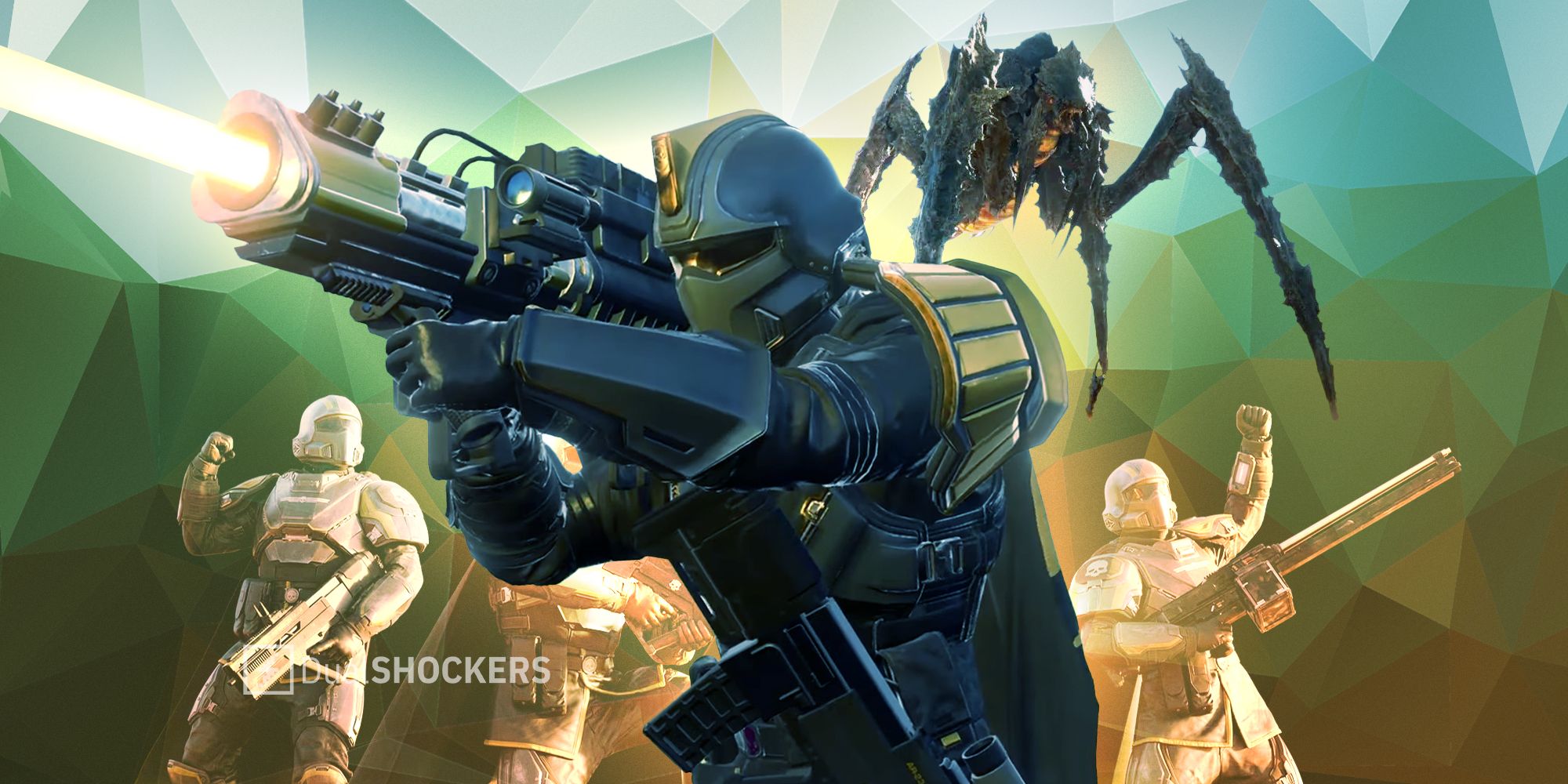
Helldivers 2 Review: Freedom Never Sleeps
Liber-tea never tasted so good!
Hell Has Never Been So Political
As with any strategy game, there are a lot of concepts to explain. There are a couple of ways to win a game of Solium Infernum, the most standard being through an election victory. After a set number of turns, the Assembly of the Conclave convenes to declare the player with the most prestige (more on that later) as the victor. However, some relics can steal the victory right at the game’s conclusion if certain conditions are met, another reason why information and scouting are so crucial in Solium Infernum.
I’ve yet to have a game stolen during the Conclave, so I still believe wholly in the power of Hellish democracy. There’s also a military victory option by which you can capture and hold the capital city of Pandaemonium for five turns, essentially a more powerful place of power. The drawback of attempting this is that you become excommunicated, meaning every Archfiend can attack you freely, and naturally, they will.
If you’re facing imminent unavoidable defeat in the Conclave, then your only recourse is often a last-ditch assault on Pandaemonium. This is why the ending of a game of Solium Infernum can become very tense — you’re trying to stop yourself from falling afoul of various schemes, trying to stay ahead on prestige and defending your territory and also the neutral capital of Pandaemonium. There’s a lot to consider as the game hurtles towards a conclusion.
You’re never in full control of any situation, there are endless factors to consider and you’re always going to miss a thing or two, especially if your opponents are actively working against you.
This could be a controversial aspect of Solium Infernum, that you can play a very good game and have it all ripped away from you right at the very end. It’s these possibilities that make Solium Infernum such a compelling experience, though. You’re never in full control of any situation, there are endless factors to consider, and you’re always going to miss a thing or two, especially if your opponents are actively working against you. If you’re leading, someone is going to drag you down. It’s inevitable.
Now, back to prestige. This resource is gained through various actions, like holding places of power or winning a legion battle against a fellow Archfiend. Prestige is paramount as not only does the player with the most prestige at the end of the game win (barring any of the aforementioned alternate paths to victory), but it can also be used to level up the rank of your Archfiend, allowing you to draw higher-quality tributes.
The Best Laid Plans
Drawing tribute is how you get tokens, which make up your economy. The economic system of Solium Infernum is unlike any other strategy game. There are four different types of tokens, and you’ll need them to purchase legions (units), praetors (generals) and artifacts (buffs), as well as pay for rituals (spells) and power increases for your Archfiend. You don’t control what types of tokens you get from tributes, and you’ll often need to combine tokens to pay for things, since everything needs to be purchased in under eight tokens.
This may seem like busy work, but the real reason these systems exist is to create an opportunity cost every turn. In Solium Infernum, you can only take two actions per turn (or more if you level up your Archfiend). Drawing tribute costs an action, and so does combining tokens. Everything else like casting a ritual, moving a legion, and buying something from the Bazaar also costs action points.
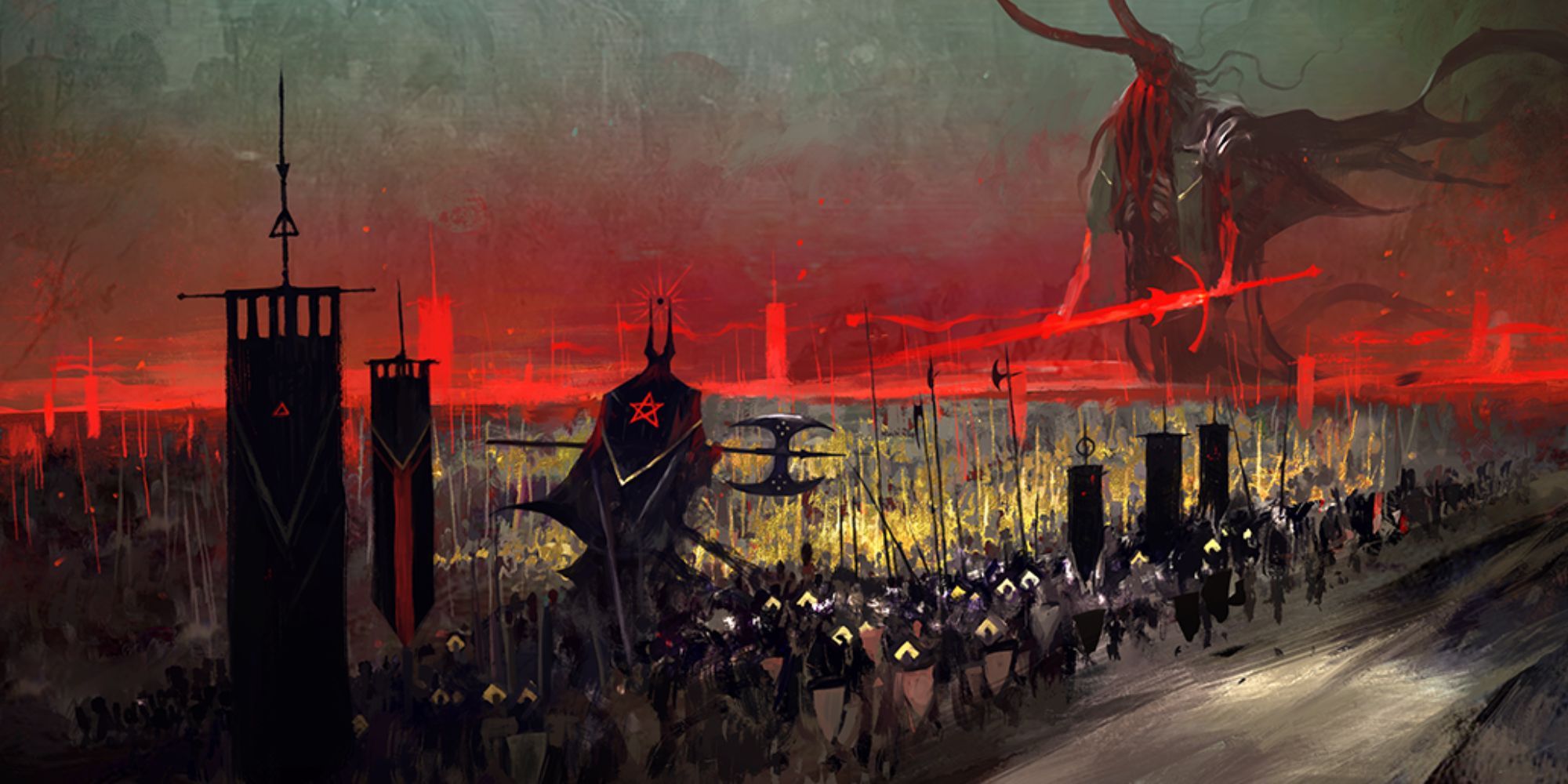
Remaking A ‘Civilization in Hell’ Strategy Game Isn’t Easy
Solium Infernum creative director Ty Carey talks turning hell into a strategic battlefield.
This is why planning is such an important factor — you’re not going to be able to get everything done in one turn. It often takes long multi-turn sequences for your plans to come to fruition. This is the intentional design consequence of limiting the number of actions a player can take per turn. While I enjoy the need for long-term scheming, I find the token system to be clunky, particularly the need to combine tokens. I don’t dislike the unique economic system, but having to spend an action point laboriously throwing tokens into a grid so I can afford something next turn is a bit tedious for my liking.
It should be clear by now that Hell is very political. This extends to hostilities between Archfiends as well. You can’t just muscle your way into your opponent’s territory without first getting approval from the Conclave. This is all handled through vendettas, the system that governs diplomacy and war. There are insults, prestige wagers that can be accepted or rejected by the player being insulted. If a player accepts an insult, their opponent gains the prestige that was wagered. They lose nothing if they reject, but now their opponent can declare a vendetta. The system is the same for extortion and demands. They don’t have to give you what you want, but now you have a justifiable cause for hostilities should they refuse.
It should be clear by now that Hell is very political.
A vendetta is a conflict with clearly defined rules of engagement. I could declare a vendetta that requires me to capture three cantons in four turns; I’ll then need to set about accomplishing that and my opponent will need to stop me. In the process, our legions can fight. However, since they’re only defending against my vendetta, they won’t be able to enter my territory. This is how conflict works in Solium Infernum. It’s incredibly bureaucratic, and I love it. The vendetta ends after the terms are accomplished or the turn limit runs out.
After three successful vendettas have been committed against an opposing Archfiend, you can declare a blood feud, which is a state of open warfare, where you can eliminate a player by capturing their stronghold. A lesson you’ll learn quickly in Solium Infernum is that you can’t just reject everyone’s demands and insults, because you won’t have the resources to contend with multiple ongoing vendettas. You’ll get picked apart if you’re everyone’s enemy.
The Enemy Of My Enemy
I almost let my hubris cost me in one of the game’s single-player chronicles, scenarios where you need to both win the game and achieve something else on the map. I was way ahead in prestige and I held the Mines of Gehenna, my second objective. Murmur decided to demand tribute tokens from me, and I could certainly afford to pay him off, but I was so powerful that I thought nothing of his demands, so I rejected him. That very turn, an incredibly powerful legion, ‘The Beast’, appeared in Murmur’s territory, in a tile adjacent to my Mines of Gehenna.
Should he have wished, Murmur could have declared a vendetta that involved capturing a place of power, sent The Beast against the Mines of Gehenna, and I would have been powerless to stop him. Thankfully, the AI didn’t press the issue, but I know a human would have sunk the knife in. It was a real heart-pounding moment, and an early indicator for me of the potential that Solium Infernum has to play with emotions. I learned my lesson, some insults must be suffered.

Final Fantasy 7 Rebirth Review: A Righteous Roadtrip
Seven seconds till the end.
A unique aspect of Solium Infernum is its inclusion of asynchronous multiplayer. When I spoke to League of Geeks co-founder Trent Kusters, he told me that he expects asynchronous to be the more popular way of playing Solium Infernum. The game has built-in Steam functionality that sends you a notification on the platform when your turn is ready. Depending on how long you want your turn timer to be, you could theoretically play out a game over weeks or even months. It’s a fascinating addition, and one I’d love to explore further once the game is released.
League of Geeks uses its signature card art style from Armello in Solium Infernum, and there is some hauntingly beautiful art in there. The game’s aesthetic is to be lauded, everything fits into the central theme of Milton’s Hell, and the art for events, legions, and praetors are all praise-worthy just as standalone pieces of art. A fantastic job has been done on the modelling of the Archfiends. They’ve brought consistency to the design of very different, fantastical beings, and the result is very satisfying.
The audio design and soundtrack are perfectly synergised with the themes of Solium Infernum. It’s this sort of frenetic, droning, and sinister background music that sets the scene for the evil political schemes you’re about to unleash.
Solium Infernum is a unique strategy game, one that I imagine is going to appeal to a niche group of strategy game players. There’s certainly a learning curve in adapting to new systems, but as you feel yourself becoming more familiar with everyone’s limitations, you start to see your opportunities. There’s limitless potential for political backstabbing, the stealing of victory, and well-executed schemes.
The inclusion of asynchronous multiplayer is going to be a boon to those who can’t commit to multi-hour play sessions but can tip away at a game over time. Aesthetically, Solium Infernum is stunning and boasts a distinctive style, one that is aided by a soundtrack that matches tonally with the game’s themes. League of Geeks has crafted a masterful political strategy game, one that I foresee damaging a lot of friendships.
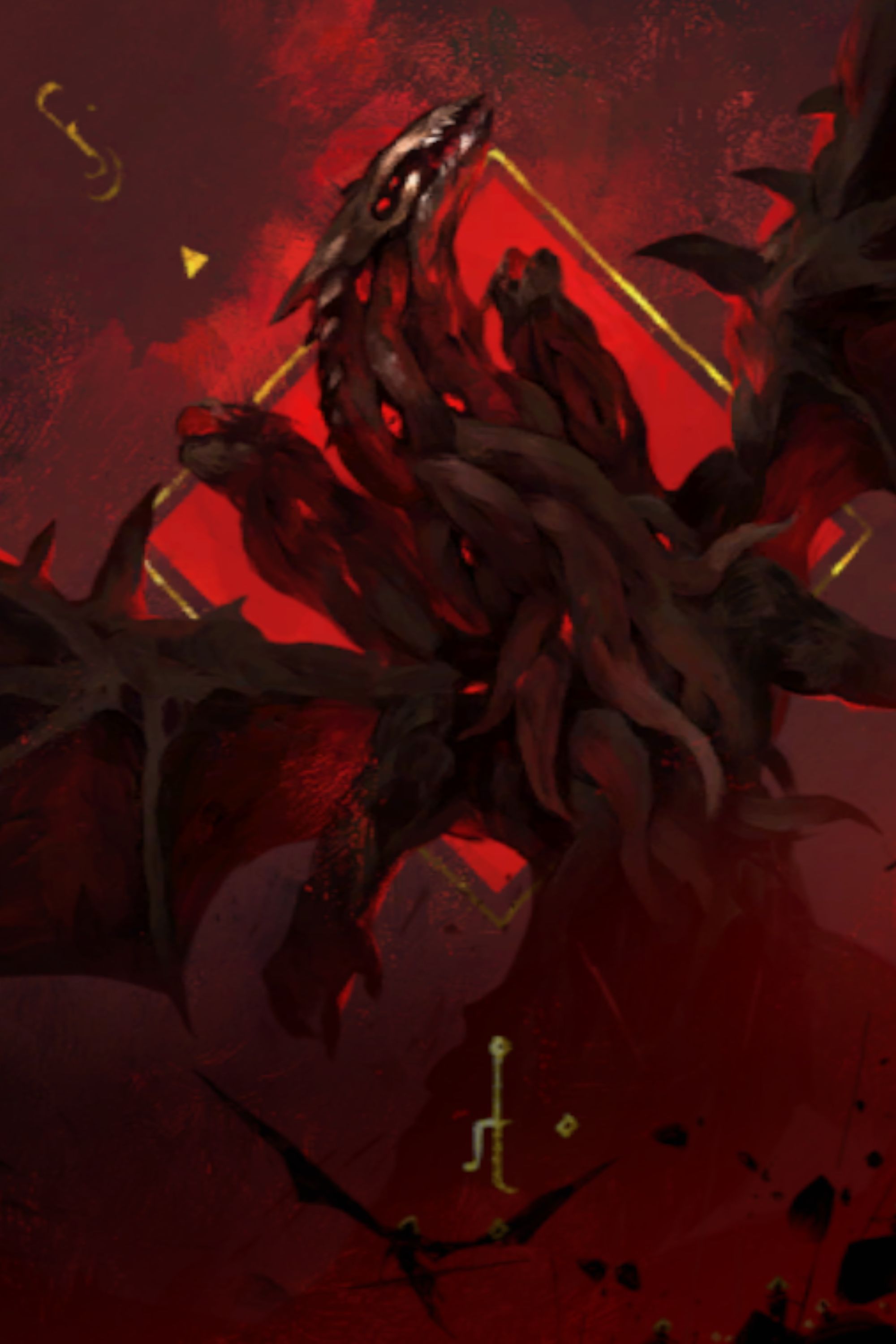
Solium Infernum
A 4X strategy game set in hell, where players vie for the throne using cunning, sorceries, and war.
- Released
- February 22, 2024

